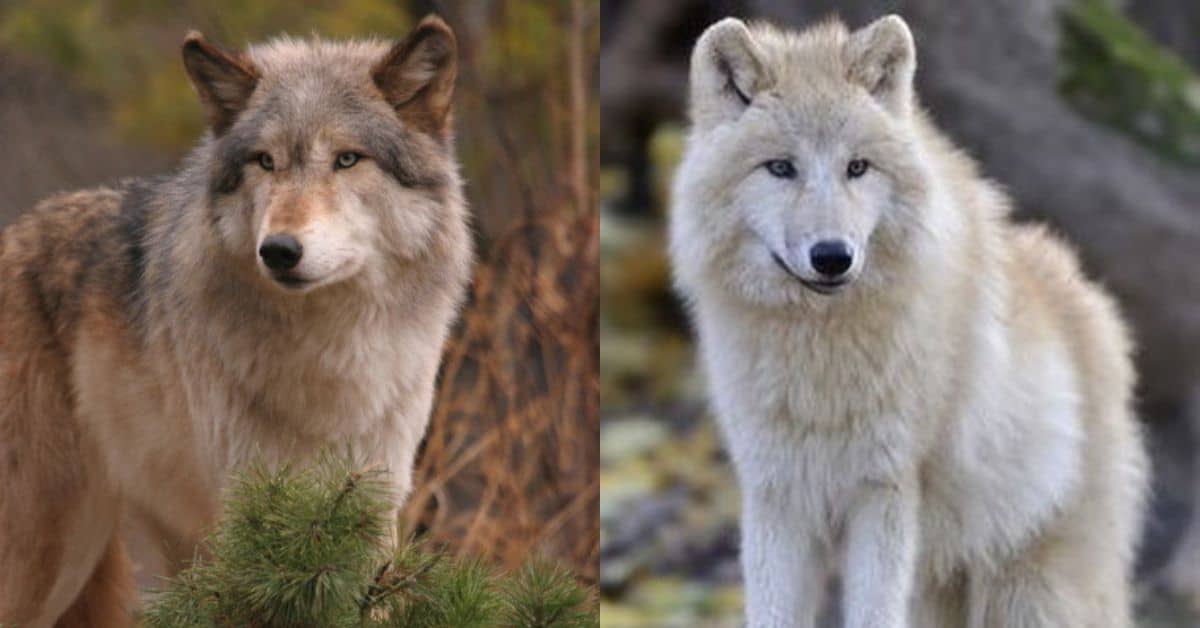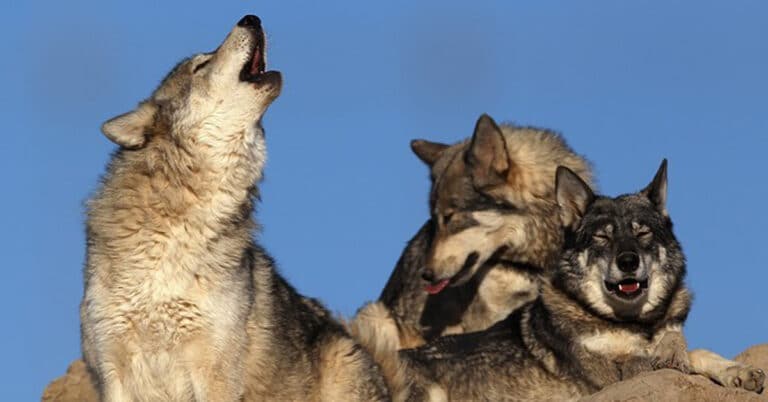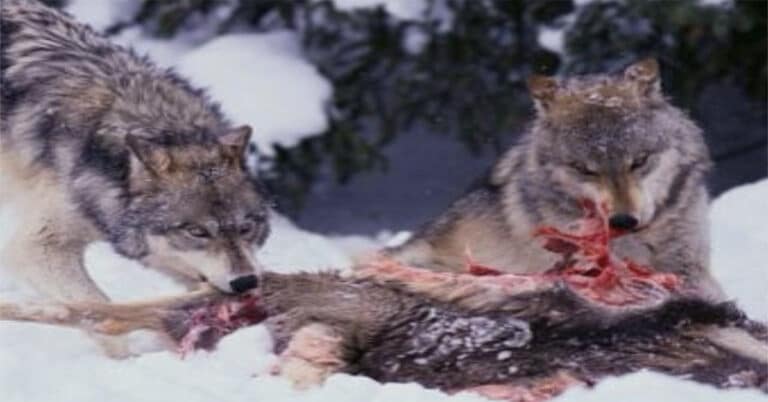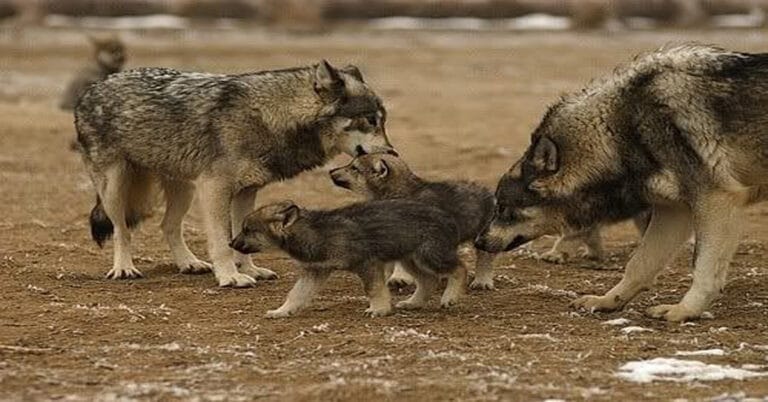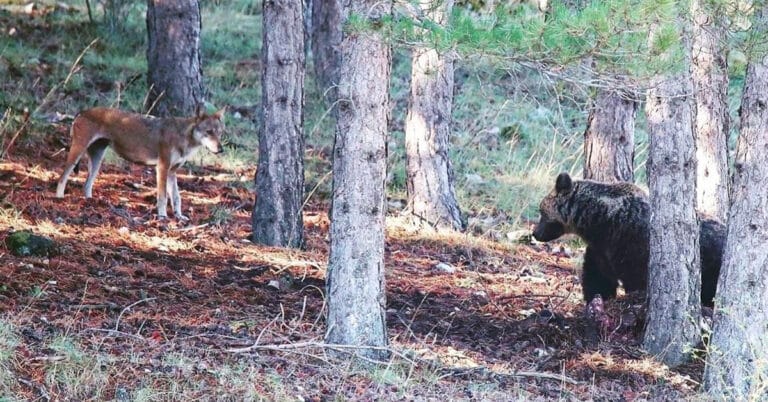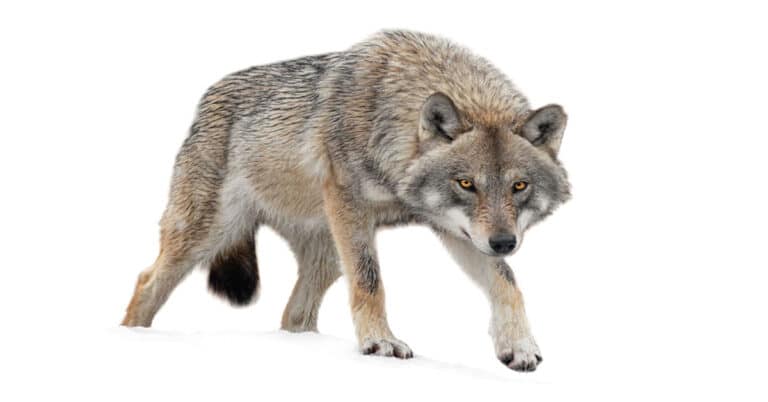7 Largest Wolves in the World: Main Characteristics & Distribution Areas
If you loved listening to fairy tales, especially Little Red Riding Hood, as a child, chances are that the wolf has remained in your consciousness as one of the most dangerous animals. It’s hard to ignore the predatory instincts and physical strength of wolves, especially when they are adapted to a variety of climates and habitats, from arctic tundras to green meadows and forests, not only in Europe and Asia but also in the Americas and Africa.
Given this scale of spread, you may be wondering which wolves are the largest in the world. In this article, you’ll find out the 7 largest species of wolves and what the physical structure of these intelligent and highly social animals hides.
Top 7 Largest Wolves in the World
1. Mackenzie Valley Wolf
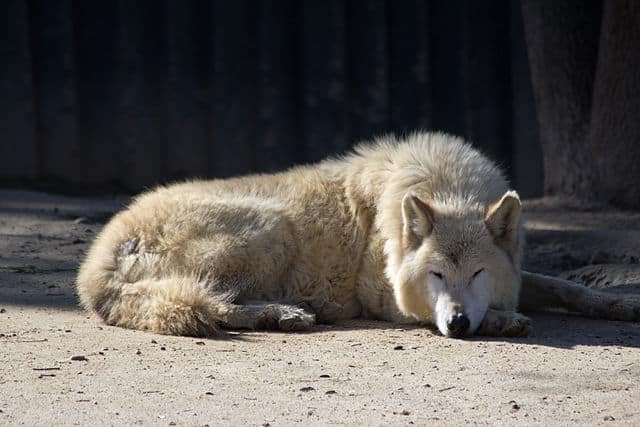
The Mackenzie Valley Wolf is at the top of our list of the largest wolves in the world. This species is otherwise known as the Northwest Wolf, the Canadian Timber Wolf, or the Alaskan Timber Wolf. The reason for this variety of names can be explained by the extent of its range, which indicates that this species is found not only in western Canada but also in Alaska and the northwestern United States.
One of the reasons why the Mackenzie Valley Wolf is considered the largest wolf in the world is their weight. Specifically, the average weight of a male Mackenzie Valley Wolf starts at 54 and goes up to 80 kilograms. On the other hand, the weight of a female reaches an average of 45-46 kilograms. A Mackenzie Valley wolf that weighed 80 kg was caught only once in Alaska in 1939 and today, it’s a record for the largest wolves in the world.
Just like the weight, the height of this species of wolf is also impressive, as it reaches 183 centimeters. Chances are you will think the world’s largest wolf would be clumsy with such physiques, but in fact, the Mackenzie Valley Wolf’s long and powerful legs allow it to travel hundreds of kilometers a day, even if the landscape is snowy and rough.
Although some packs may contain as many as two or three dozen wolves, there are usually 6 to 12 Mackenzie Valley wolves in a pack. Generally, all wolves in the pack have strong jaw and neck muscles. Still, Northwestern wolves prefer a relatively safe route and choose to hunt young animals.
2. Arctic Wolf
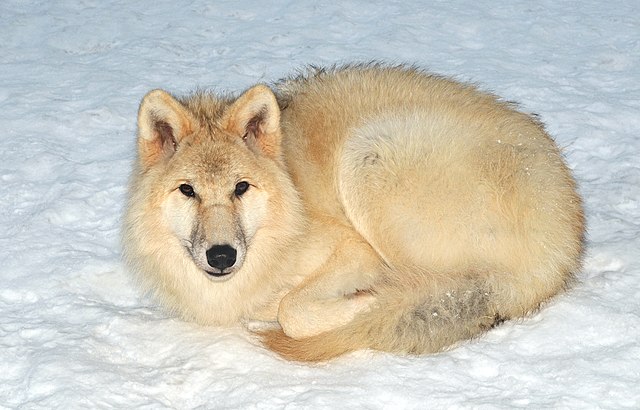
The Arctic Wolf is the second of the largest wolves in the world since it weighs up to 70 kilograms and reaches 160 centimeters in height. The Arctic wolf lives in the Canadian Arctic, on the Melville and Ellesmere Islands, and therefore it is often called the Melville Island Wolf.
Due to the minimal presence of humans in their living environment, one of the largest wolves in the world is not afraid of humans, and this fact increases our suspicion of them even more. Unlike other representatives of the gray wolf breed, the distance from humans has allowed the Melville Island Wolf to establish a foothold in its historic habitat.
Taking into account the principle of social life characteristic of wolves, Arctic wolves also live in packs and mainly hunt deer, arctic hares, and lemmings.
3. Great Plains Wolf
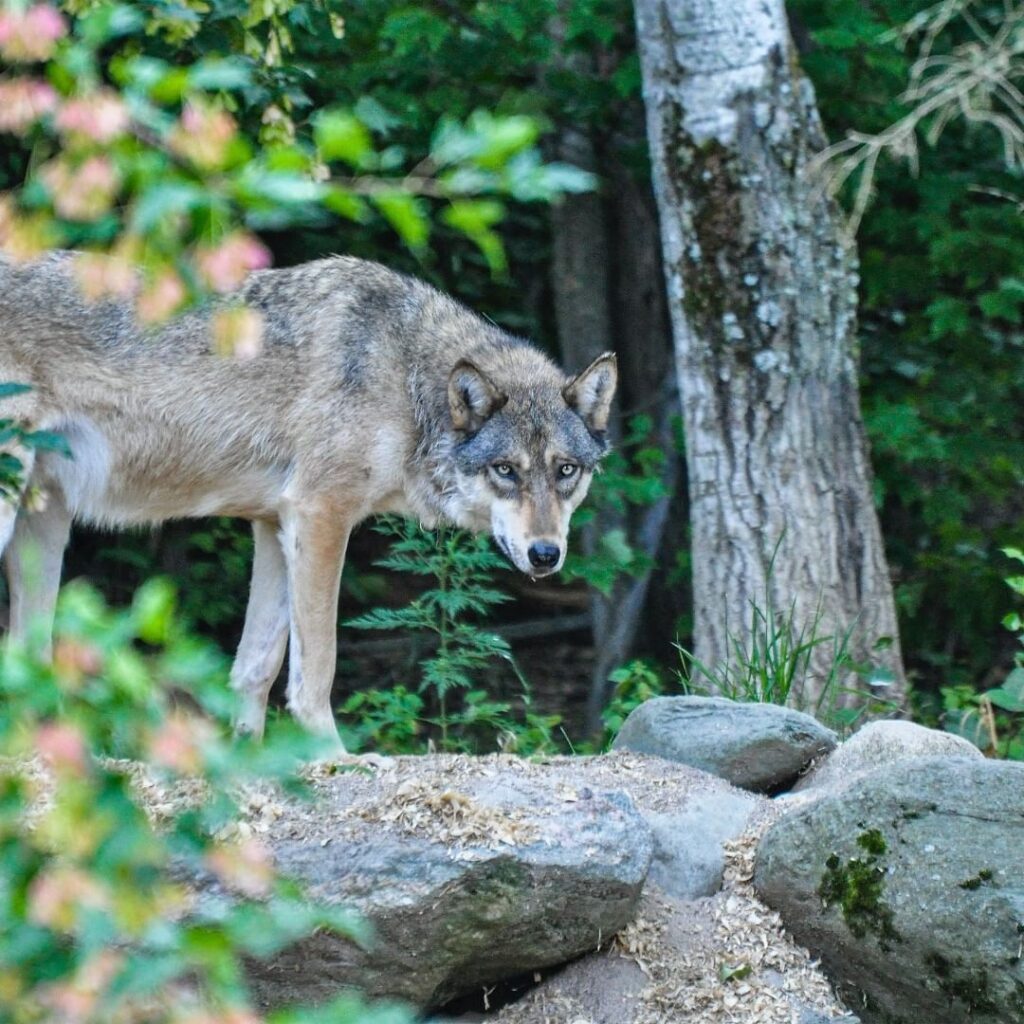
When we talk about the largest wolves in the world, we should not miss the Great Plains Wolf. Among these species, males are usually 1.37 to 1.90 meters in length and 36 to 50 kilograms in weight. This species of gray wolf is found mostly in Minnesota, but sometimes it also appears in Wisconsin and northern Michigan.
The Great Plains Wolf’s diet varies depending on which state it chooses to live in. For instance, one of the largest wolves in the world, living in Minnesota, primarily preys on white-tailed deer. However, the Great Plains Wolves that live in other places also prey on larger animals such as reindeer, loons, elk, and buffalo. When food is scarce, Great Plains wolves often prey on rodents as well.
As strange as it may sound, in a pack of Great Plains Wolves, only the dominant male and female reproduce, and the sole reason for this is to regulate the birth rate. Their mating season lasts from December to January and ends with the birth of 4 to 6 cubs. For safety, the Great Plains wolf makes a den in a mountain cave or a specially prepared hollow.
4. Eurasian wolf
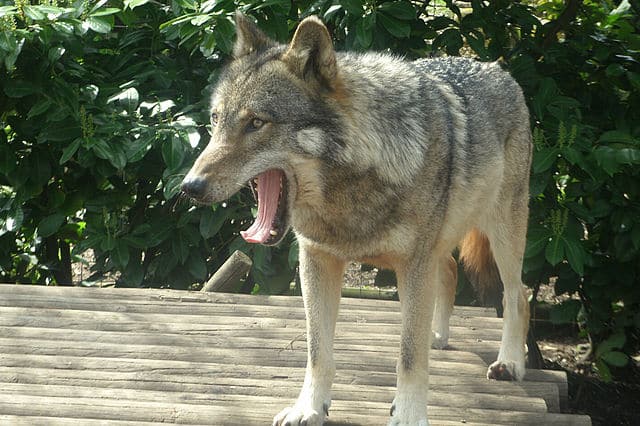
The wolf known as the Eurasian wolf, also often referred to as the common wolf and the Russian wolf, is a subspecies of the gray wolf native to Europe and Asia. It is not only one of the largest wolves in the world but also the most dangerous species of gray wolf. The Eurasian wolf weighs an average of 32-50 kilograms and reaches about 105-160 centimeters in length. Therefore, it’s another one of the largest wolves in the world.
Interestingly, Eurasian wolves tend to lead a social lifestyle. Still, there are cases when they prefer to hunt individually. That could be why breeders often experiment to get new breeds by mating the German shepherd and the Eurasian wolf.
5. Interior Alaskan Wolf
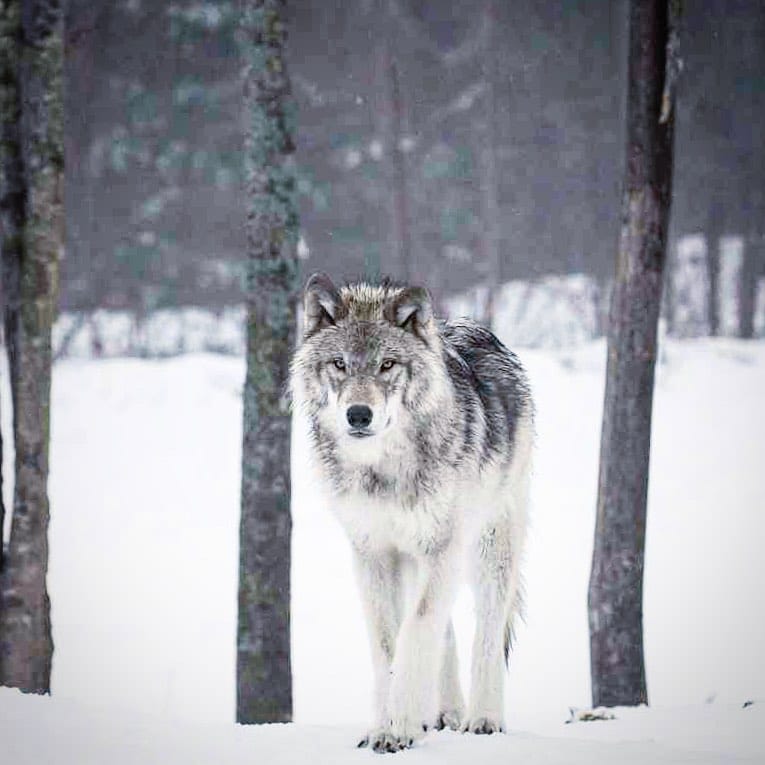
The habitat of the Interior Alaskan Wolf is the arctic coast of the United States, Canada, and the tundra region, specifically boreal forests, alpine, subalpine, and arctic tundra. Historically, Aboriginal people living in Canada hunted Interior Alaskan wolves for their fur and used it for clothing.
Most adult male Interior Alaskan wolves weigh between 38.6 and 52.3 kg, although in rare cases their weight may reach 65.3 kg. As for the female Interior Alaskan Wolves, their weight ranges from 2-5 kilograms. Representatives of both sexes reach adult size at about 1 year of age and live for 4 to 10 years.
6. Northern Rocky Mountain Wolf
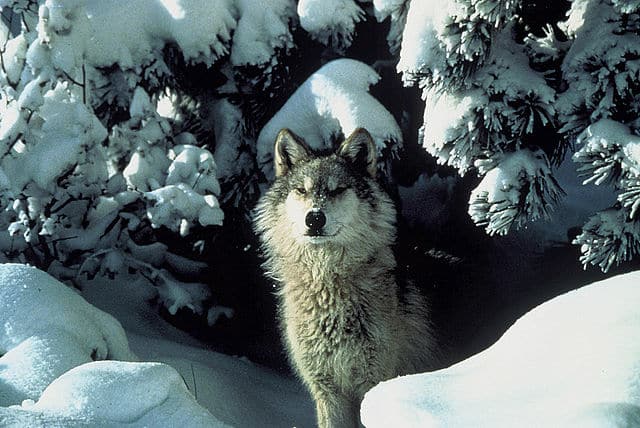
The Northern Rocky Mountain Wolf is on our list for a solid reason – it weighs 32-68 kilograms and reaches a height of 66-82 centimeters. It’s no wonder that these measurements make it one of the largest wolves in the world.
Due to habitat loss and extensive hunting, the Northern Rocky Mountain Wolf was listed as endangered in 1978. But after conservation efforts, it was delisted again in the 2000s. Nowadays, the northern Rocky Mountain wolf is found in western Montana, eastern Idaho, western Wyoming, and southern Alberta.
We can recognize and distinguish Northern Rocky Mountain Wolves from the other largest wolves in the world by their light-colored fur and flattened frontal bone.
7. Steppe Wolf
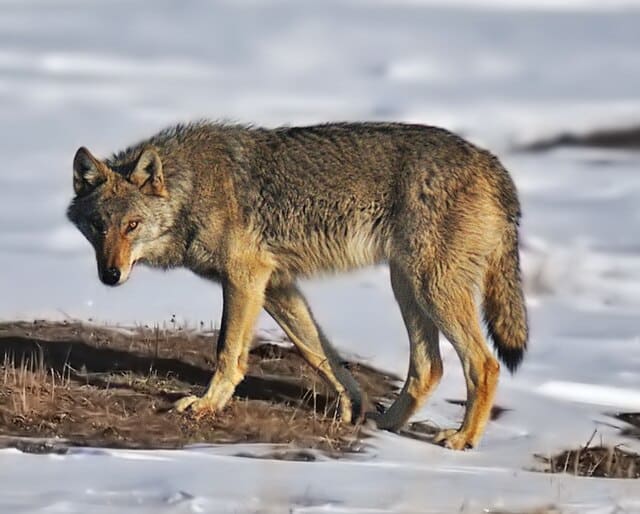
Our list of the largest wolves in the world has come to an end but the Steppe wolf will still be able to amaze you easily, as it weighs up to 35 kilograms and grows up to 126 centimeters in height.
The Steppe wolf is also referred to as the Caspian sea wolf, as it mainly inhabits the Caspian steppes, the Caucasus steppe regions, and the southern Volga region. Despite this main distribution area, the steppe wolf can be found in northern Afghanistan, Iran, and rarely even in the steppe regions of Romania and Hungary as well.
Due to its attacks on livestock and domestic animals, the Steppe wolf was considered a particularly harmful species in Kazakhstan. Believe it or not, locals did not even hesitate to kill it, which was especially easy, since people do not need an official license to hunt the Steppe wolf in this country. One important thing that you should know about this species is that the steppe wolf is particularly prone to rabies, so medical attention is vital if you or your animals are in close contact with the steppe wolf.
What Makes Wolves So Unique?
Impressive visual and physical abilities aren’t the only reasons that make the largest wolves in the world stand out from other animals. Other than this, they have a significant impact on the preservation of the natural ecosystems in which they inhabit. Wolves also play a special role in the process of maintaining ecological balance and controlling the spread of other species.
You’ve probably heard the expression “lone wolf” – people in various cultures often use this term to describe individuals who prefer being on their own. But actually, wolves are highly social animals and not only live with members of their species but also hunt in packs, which ensures safety and efficient hunting.
Thanks to their special attitude towards the family, wolves refuse to mate with close relatives and keep family ties sacred. Their sophisticated social structures are distinguished not only by strong bonds but also by complex methods of communication that are expressed in other types of vocalizations along with howling.
Final Thoughts
After learning about 7 of the largest wolves in the world, you may be more afraid of these predatory animals than before. But this reaction is natural because, after all, wolves’ strong physique and instincts make them one of nature’s best hunters.
Despite this, fortunately, wolf attacks on humans are very rare. The reason is that not only humans are afraid of them, they too fear us and try to stay away from our places of residence. Even the largest wolves in the world are more at risk of death from our actions than we are.

Nato is a content writer and researcher with a background in psychology who’s eager to explore the wonders of nature. As a travel enthusiast and animal lover, she hopes to inspire others to discover and cherish the beauty and importance of the natural world.

